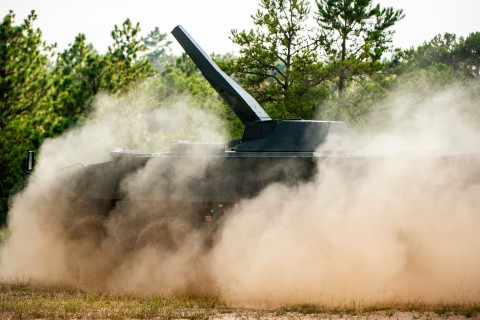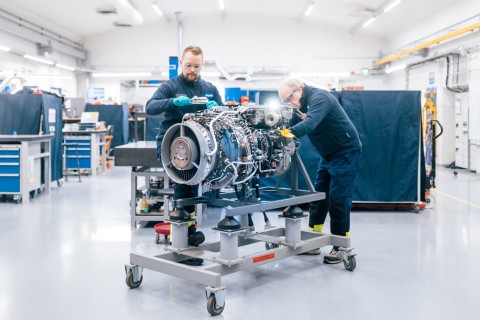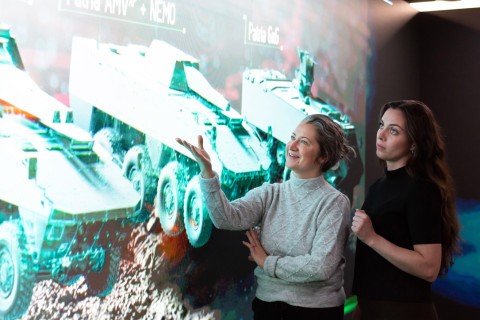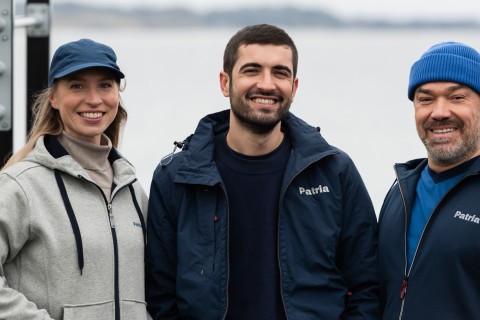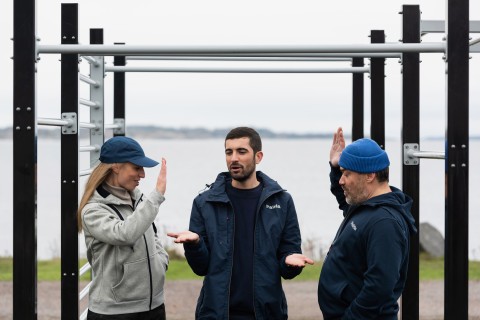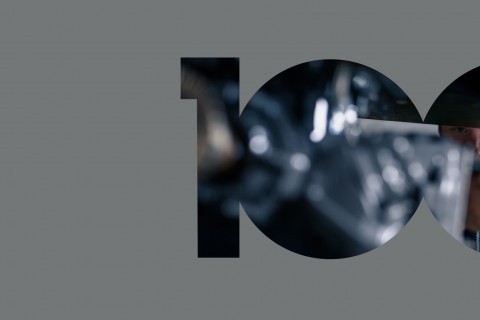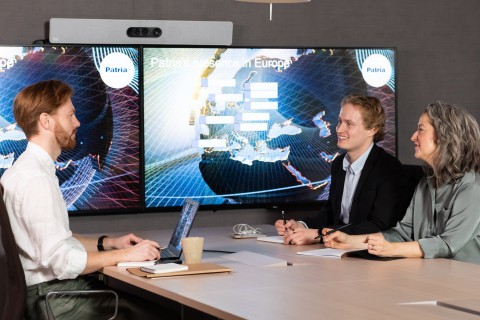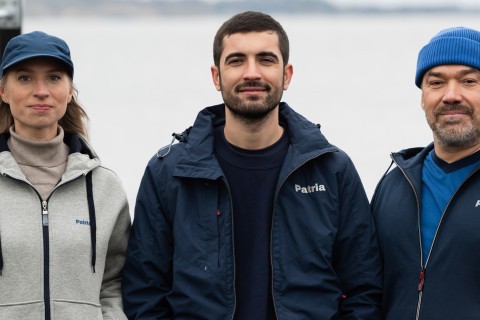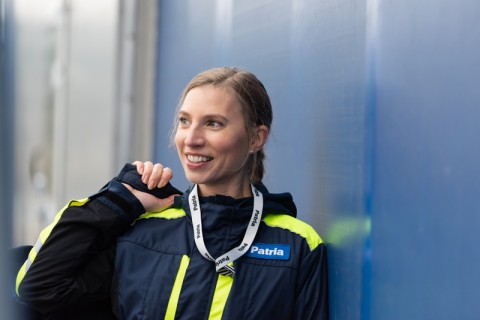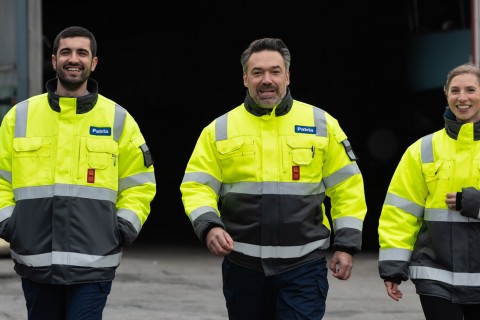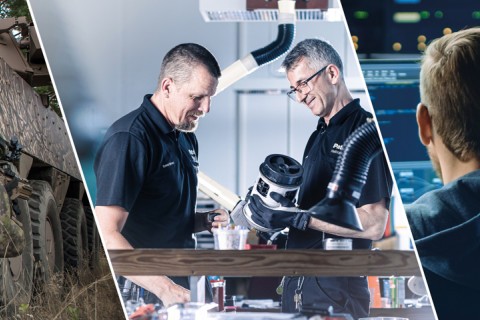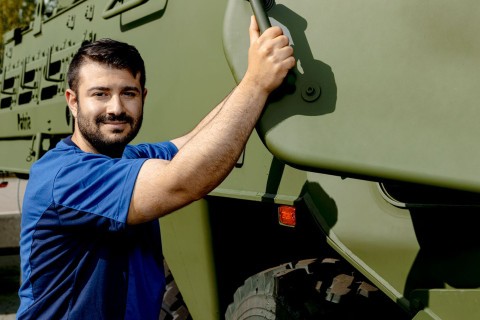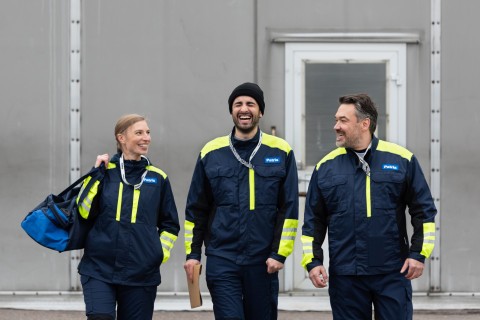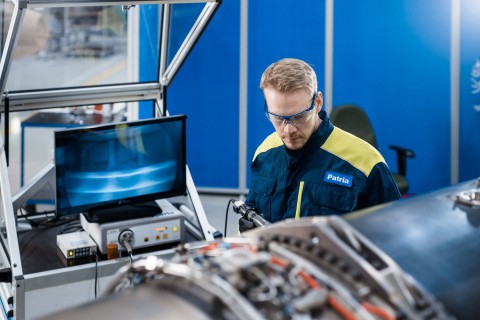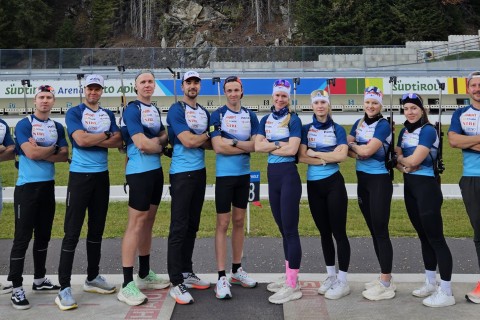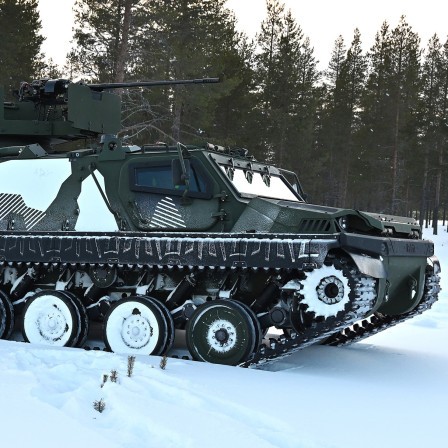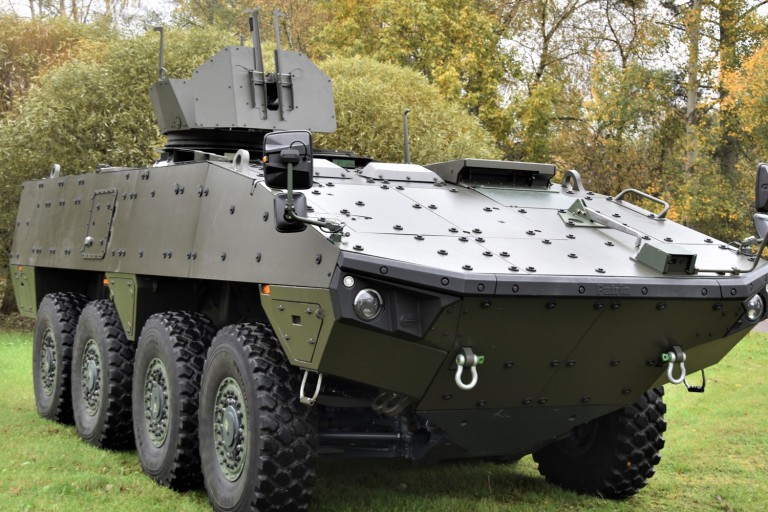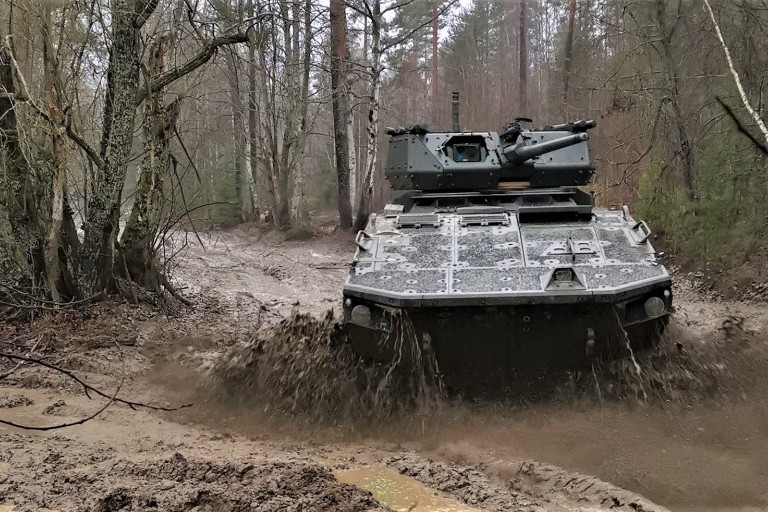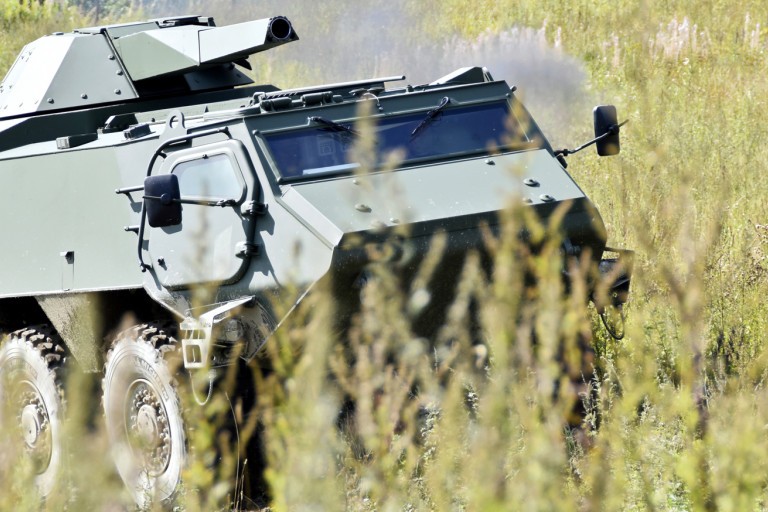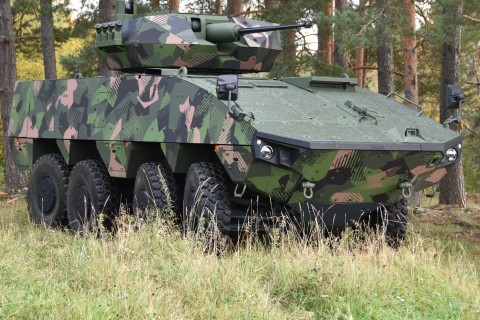
Agility on the street and off road
17.6.2015
Armoured wheeled vehicles have performed outstandingly well in current crisis management operations. These vehicles are equally manoeuvrable on tarmac and off road, offering ever better protection for their crews.
Text: Tapio Koisaari
Photos: Matti Immonen ja Patria
Patria’s wheeled armoured vehicles had a long history before the introduction of the current AMV model. The roots of the legendary Pasi are deep in peacekeeping operations, in which it has a long, successful record. Production of the six-wheeled Pasi was discontinued in 2003 when the new 8x8 Patria AMV entered serial production, but the faithful Pasi will continue to serve for decades to come. A project is currently underway to upgrade the Pasi vehicles used by the Finnish Defence Forces (FDF). While the Pasi armoured vehicle was chiefly based on technology used in trucks with lighter protection, current wheeled vehicles perform significantly better and feature improved protection. This is due to the fact that the latest operations in countries such as Afghanistan have shown that vehicles on patrol duty are exposed to increasingly effective mines and roadside bombs.
The new XP
Patria has taken up the challenge with the introduction of its new AMVXP model, which takes account of the requirements faced by current customers and the advantages offered by AMV’s excellent basic structure. Whether a wheeled vehicle is used as a personnel carrier or a platform for weapon systems, the ability to maximise its payload is a key requirement. With a total weight of 30 tonnes, AMVXP can deliver a payload of 13 tonnes. The mass of the vehicle’s protection, weapons, equipment and crew is taken into consideration when calculating the payload. With regard to vehicles, engine power is also a consideration. The engine of AMVXP provides an output power of 450kW, representing an increase of ten per cent over the vehicle’s predecessor. However, the current engine power is not the only interesting figure, since the equipment of contemporary soldiers and the vehicle’s own systems will require substantial levels of electrical power. The maximum output of generators associated with the introduction of XP will be sufficient for future needs.
The truly extreme environment for any ordinary land vehicle is water. However, AMV has an amphibious basic structure, enabling it – up to a weight of 28 tonnes – to swim through water, provided that it is fitted with an amphibious option.
Improved chassis
The design of AMV 8x8 was already found to be highly functional at the prototype stage, something that came as no surprise to its designers. Due to multibody simulation, the designers were able to ensure excellent driving dynamics at the drawing board stage – the simulation models were made progressively more precise by verifying them through various measurements. “The objective the designers set for themselves when designing AMV’s features was manoeuvrability equivalent to that of tracked vehicles under difficult conditions on terrain, while retaining the advantages of wheeled vehicles on the road,” says Kari Grön, Vice President, vehicles product line, when summing up the project’s challenges. The basic solutions regarding the vehicle’s suspension speak volumes to those who know about automotive engineering. An independent double wishbone suspension, familiar in racing cars, provides an excellent foundation for the design. Combined with a hydropneumatic suspension element – a less familiar feature to the general public – this mechanism enables the vehicle’s wheels to oscillate almost half a metre in a precisely controlled manner. Alongside the optimisation of power distribution within the powertrain system, the work cited above alone would deliver an excellent performance on terrain, but all of this is supplemented by AMV’s maximum speed of more than 100km/h. Ensuring stability at high speeds also requires expertise on tyres, one of the strengths of AMV design team. Superbly capable in off-road use, this vehicle also has excellent on-road performance. To reconcile the conflicting features of on-road and off-road use, AMVXP will be equipped with an optional mechanism for adjusting the vehicle’s ground clearance, enabling enhanced manoeuvrability in extreme conditions. In addition to adding enhanced equipment, the suspension of XP has been optimised to a degree that surpasses that of the previous model, with the aim of maximising the vehicle’s performance. A well-functioning chassis also facilitates the operation of the weapon system stabiliser. Ensuring the vehicle’s smooth passage across terrain requires a substantial degree of flexibility in the suspension, along with a sufficiently smooth and progressive dampening action that can be adjusted to match the suspension’s flexibility. Such a suspension adjustment is virtually the opposite of that required of a vehicle making sharp swerves on tarmac. The truly extreme environment for any ordinary land vehicle is water. However, AMV has an amphibious basic structure, enabling it – up to a weight of 28 tonnes – to swim through water, provided that it is fitted with an amphibious option.
Flexible product structure
While the modular product structure is a key innovation in manufacturing industry, its adoption is making slow progress among manufacturers of heavy equipment and military vehicles. AMV customers benefit in a number of ways from the fact that Patria is an industry forerunner in this respect. For example, the axle wheel stations described above, with their interchangeable suspension components, constitute a module of their own. This is a major advantage with regard to security of supply on the battlefield. On the other hand, AMV can be fitted out for a broad range of tasks, from ambulance duties to providing a platform for heavy mortars. In the process of integrating weapons systems, mere modularity is insufficient – the assistance of Patria’s design team is required in order to ensure the overall performance of the vehicle. Customisability supported by Patria’s flexible design team is one of the company’s strengths. The benefits of modularity become clear when considering the vehicle’s protection and crew compartment. Modularity enables the development of the vehicle’s protection during the late phases of its life-cycle, which is often made necessary by changes in the operating environment. However, the customer can already see the key benefits during the vehicle’s procurement phase. A well-thought out product is also cheaper to manufacture and, naturally, to maintain. The product’s competitiveness is therefore evident not only in its performance, but also in its price.
Reliable life-cycle support
Patria can arrange for the assembly of AMV in the vehicle’s target country, enabling the customer to take advantage of product support located nearby. An assembly plant in the customer’s own country can be a significant asset during a crisis or similar situation when equipment maintenance capability is put to a genuine test. A long service life of up to 30 years means that the greatest development pressure appears in the form of digitalisation. AMVXP is already compatible with any C4I or BMS system and, due to the vehicle’s modularity, system upgrades can be smoothly performed on its electronic systems. The ability to ensure the reliability of the partial deliveries and product support required by the vehicle’s long service life places certain requirements on the company delivering such vehicles. Patria’s steady ownership lays a strong foundation for long term operations.
What did you like about the article?
Thank you for your opinion! You can share the article on social media using the buttons below:
